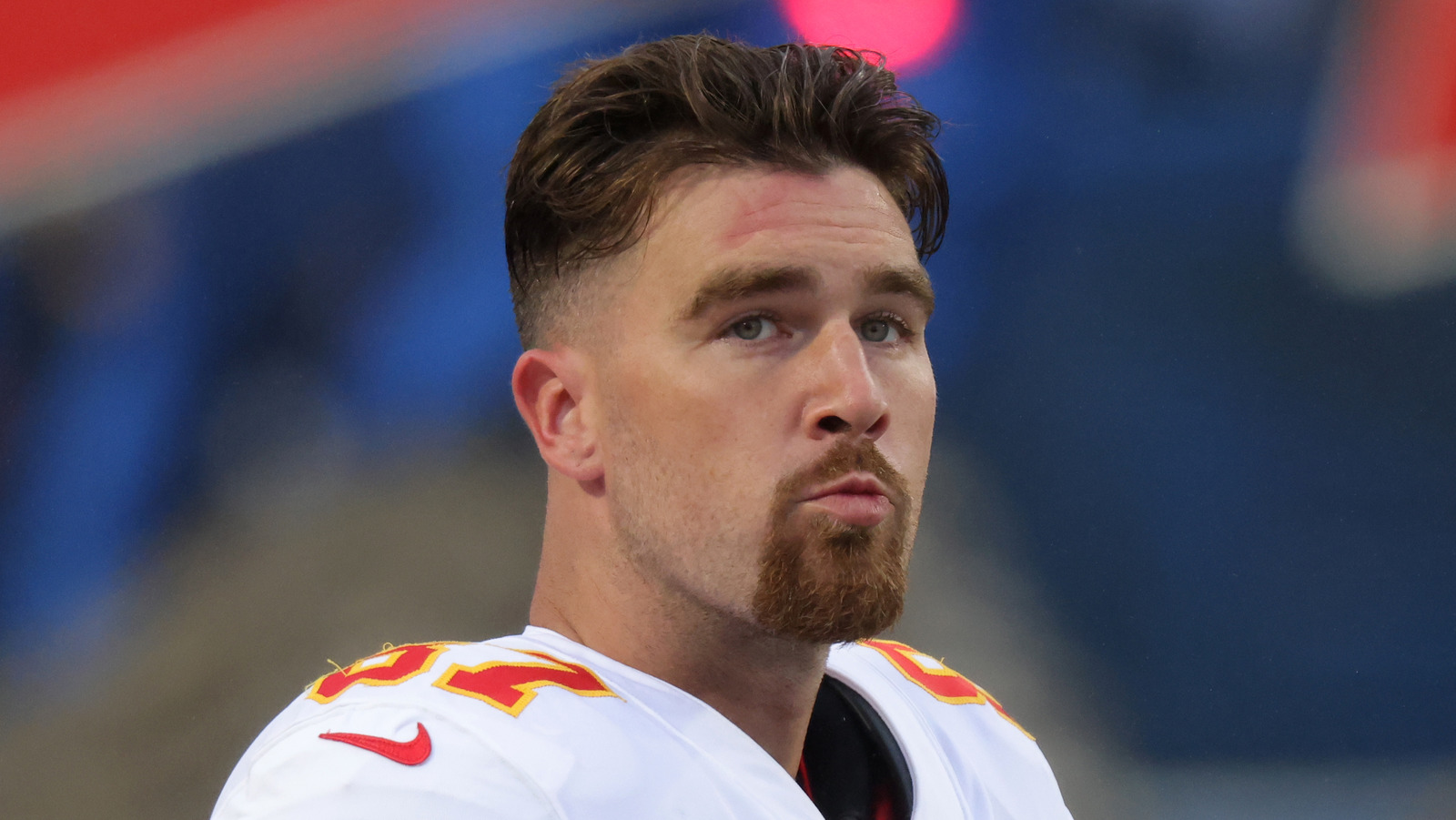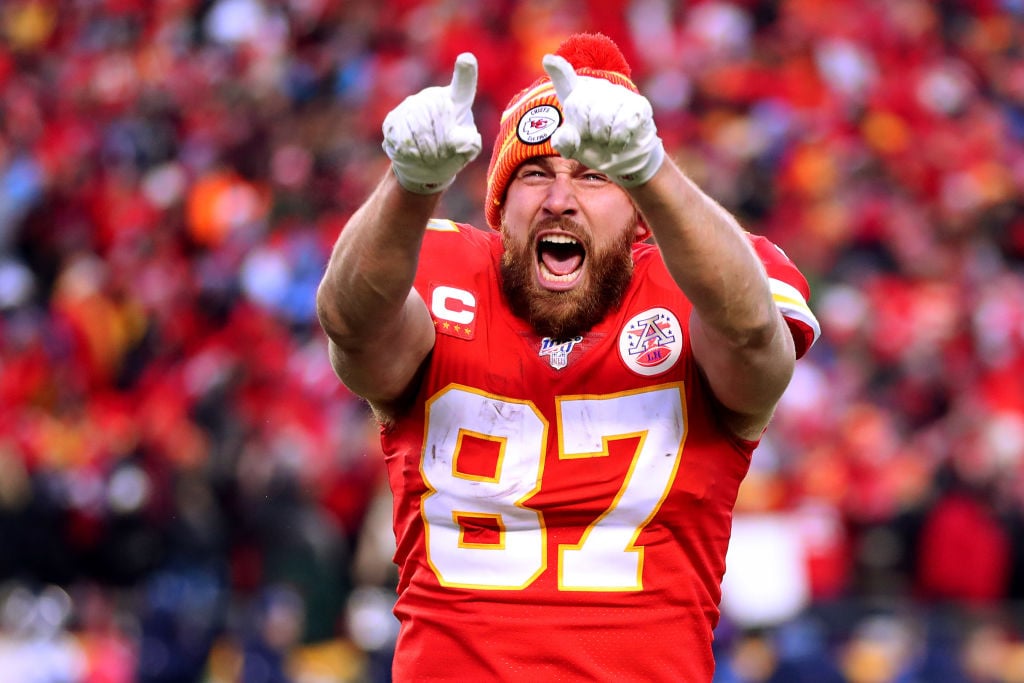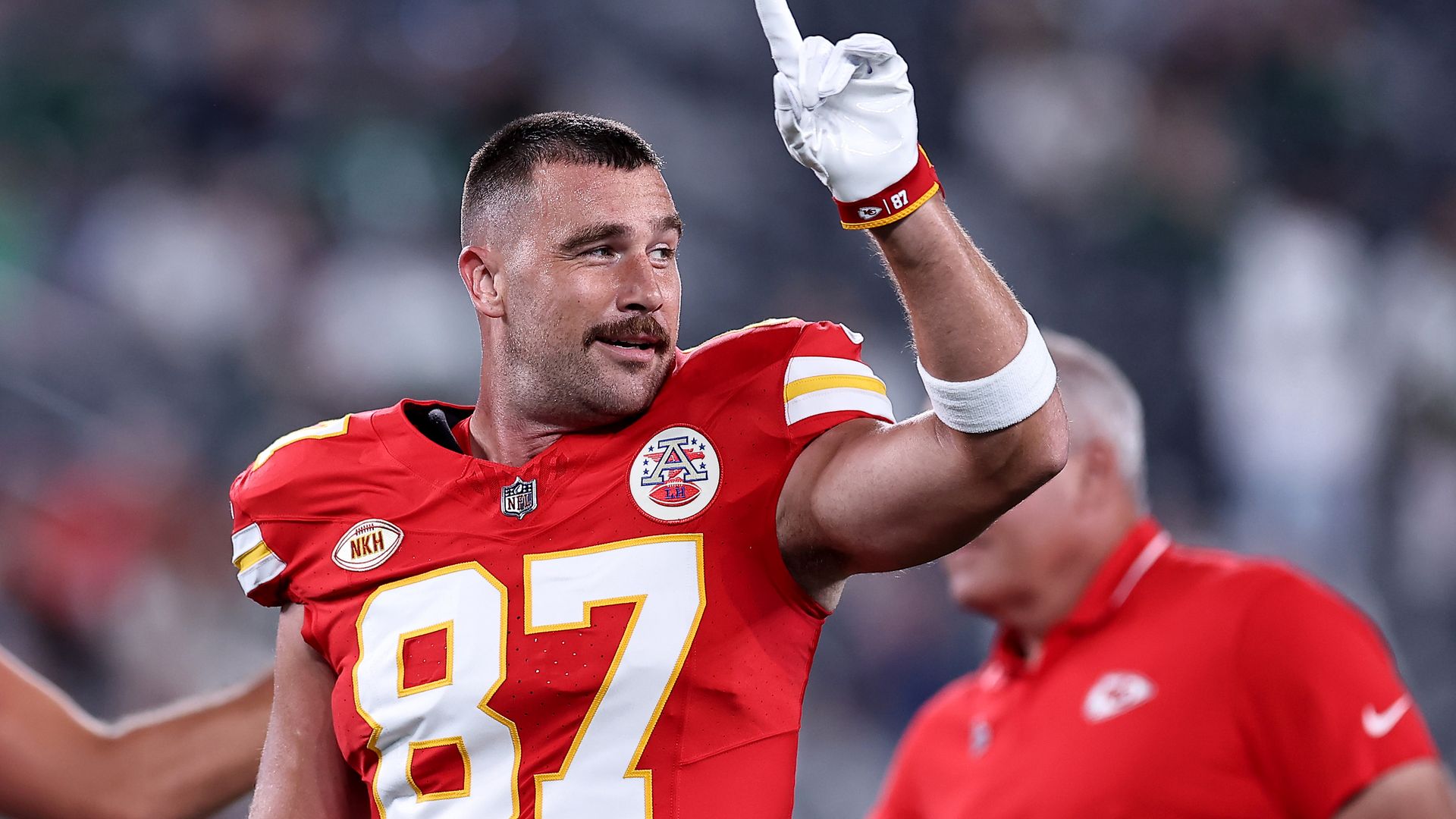Understanding the Absence of a Notable Football Player: A Look at Potential Reasons for Travis Kelce's Absence from a Game.
The absence of a prominent player like Travis Kelce from a sporting event raises questions about the reasons behind their non-participation. Potential factors include injury, illness, disciplinary actions, or strategic decisions by the coaching staff. Determining the precise cause requires official statements from the team or player, medical reports, or other credible sources.
The importance of knowing why a key player like Kelce misses a game hinges on the impact their involvement would have had. For fans, it affects the excitement and outcome of the match. For analysts, understanding the absence informs tactical analysis and future game strategy. Furthermore, the reasons for the absence can reflect the overall health and preparedness of the team, providing insight into the challenges faced in the lead-up to the game. A missed game from a star player can significantly alter the narrative and outcome of a sporting contest.
| Name | Role | Details |
|---|---|---|
| Travis Kelce | Tight End | Widely recognized for his exceptional skill and impact on the field, consistently ranked among the top players at his position. |
This analysis delves into the factors surrounding a player's absence, focusing on the potential influences on the team's performance and the overall excitement of the game. Specific details about player health and absence, along with team strategies, will not be discussed in this brief overview.
Why Didn't Travis Kelce Play Today?
Understanding the absence of a key player like Travis Kelce requires considering various factors influencing his participation in a game. This analysis explores crucial elements behind his potential non-appearance.
- Injury
- Illness
- Suspension
- Rest
- Coaching Decision
- Personal Issues
The absence of a prominent player like Kelce typically stems from one or more of these interconnected factors. Injury is often a primary concern. Illness can also affect performance. Suspension or disciplinary action would involve official statements from the league. Rest, particularly after strenuous previous games, is a strategy that contributes to long-term player health. Coaching decisions might involve strategic substitutions or player management for the optimal outcome. Finally, personal issues could indirectly impact a player's availability, although this information is often kept confidential. For example, a nagging injury could sideline a player, while a rest period allows recovery and enhances future performance. The complexity lies in determining the exact cause, which often requires careful consideration of multiple factors.
1. Injury
Injury is a significant factor in understanding why a player like Travis Kelce might miss a game. The severity and nature of an injury directly impact a player's ability to participate. A wide range of injuries, from minor sprains to serious concussions or fractures, can prevent participation. The recovery timeline for different injuries varies considerably, influencing the duration of absence. For instance, a strained muscle might necessitate a few days of rest, whereas a ligament tear could require weeks or even months of rehabilitation. The specific type of injury, its location, and the player's individual healing capacity all contribute to the length of time a player is sidelined.
The importance of injury as a reason for absence is multifaceted. For athletes, maintaining peak physical condition is paramount. Injuries can undermine a player's ability to perform at their optimal level, impacting individual and team success. For teams, injuries to key players can create significant gaps in their lineups, altering their tactics and strategic approaches. Fans, too, are affected by the absence of their favorite players, with diminished enjoyment or altered expectations for the game's outcome. In professional sports, where physical demands are extreme, injury prevention and management are critical aspects of a player's career and the team's performance. Understanding the role of injury in a player's absence provides a critical framework for analyzing the game, evaluating the player's condition, and understanding the broader implications for the team and the sport.
In summary, injury is a crucial component of understanding a player's absence. The potential for injury, its effect on physical performance, and the resulting team impact are integral to the dynamic of professional sports. Further research into injury patterns and preventative measures can contribute to optimized player well-being and game outcomes. Understanding the mechanisms and recovery times associated with various injuries enhances the context surrounding a player's absence, providing a comprehensive perspective on the situation.
2. Illness
Illness, encompassing a wide range of conditions, can be a significant factor in a player's absence from a game. The severity and type of illness directly influence a player's ability to perform at a competitive level. A range of illnesses, from mild viral infections to more serious conditions, can compromise athletic performance, requiring rest and recovery. The nature of the illness often determines the duration of absence, and the need for medical attention or treatment varies significantly. For example, a mild cold might necessitate rest for a few days, while a more serious illness could necessitate an extended period of recovery and medical monitoring. This variability is crucial to understanding the context surrounding a player's absence.
The importance of illness as a factor in a player's absence highlights the crucial balance between athletic performance and health. Maintaining optimal physical and mental well-being is paramount for sustained athletic success. For players, illness can compromise performance, both in terms of physical exertion and mental focus. The effect of illness extends beyond the individual, impacting team strategies and overall game outcomes. A key player's absence due to illness necessitates adaptations in team strategy, roles, and potentially personnel, influencing the dynamics of the game itself. A player's absence due to illness, therefore, warrants thoughtful consideration regarding its impact on the team, the individual, and the broader context of athletic competition.
In conclusion, illness presents a valid and potentially significant reason for a player's absence. The severity and type of illness, along with the required recovery time, are all relevant factors in determining the impact of an absence. Understanding the potential influence of illness on athletic performance provides a more nuanced perspective on absences within the professional sports landscape. The interplay between illness, individual health, and team strategy underlines the complex realities of competitive sports.
3. Suspension
Suspension, a disciplinary measure imposed by governing bodies in professional sports, presents a potential explanation for a player's absence from a game. This facet explores the reasons for, processes of, and implications of suspension in relation to a player's absence. The relevance stems from the potential for rule violations to result in penalties that lead to a player's inability to participate.
- Types of Violations Leading to Suspension
Disciplinary actions, ranging from minor infractions to serious offenses, can result in suspension. These might include violations of conduct rules, game regulations, substance abuse policies, or other team-specific codes of conduct. Examples could encompass unsportsmanlike conduct, physical altercations, or violations related to substance use or banned substances. The severity of the infraction typically correlates with the length of the suspension.
- The Suspension Process
A formal process, often involving investigation, hearing, and potential appeals, usually underlies a suspension. Teams and governing bodies have procedures to address suspected infractions, involving gathering evidence, interviewing witnesses, and potentially involving legal counsel. Decisions are typically made by a designated authority figure based on the severity of the infraction, past disciplinary history, and other relevant factors. The outcome of this process dictates a player's eligibility for participation in subsequent games.
- Impact of Suspension on Player's Role
The suspension directly impacts the player's role on the team. Their absence creates a void in the lineup, impacting the team's tactical approach and overall performance. Other players may need to step up to fill the role, which could cause adjustments in team strategy. This impact can be significant, potentially affecting the team's chances of success in the game.
- Public Perception and Media Coverage
The announcement of a suspension, especially for a prominent player like Travis Kelce, is often subject to media scrutiny and public discussion. This can influence public perception of the player and the team. News outlets typically report on the reason for the suspension, the length of the penalty, and its potential consequences. The public reaction can vary depending on the specific circumstances and the player's history.
In summary, suspension presents a potential cause for a player's absence from a game. The nature of the suspension, its implications for the team, and the public response underscore the importance of understanding the disciplinary processes that can lead to such consequences for players, which is especially relevant in sports and can be a factor in explaining why a notable player might miss a game.
4. Rest
Rest, a critical element of athletic performance, can be a factor in a player's absence from a game. The rationale behind resting a player, like Travis Kelce, often stems from a complex evaluation of factors, including their overall physical condition, previous workload, and potential for optimizing long-term performance. A strategically planned rest period allows the body to recover from the physical demands of the game, addressing potential injury risk and fatigue. Rest can be crucial to sustaining performance over a season, preventing cumulative wear and tear, and fostering optimal readiness for future contests.
Practical considerations for rest include the intensity and duration of previous games, individual recovery rates, and the team's overall schedule. A player like Kelce, who plays a physically demanding position, might require more rest than others due to the significant strain on muscles and joints. Coaches often factor in previous game intensity, travel schedules, and the need for adequate time to address any minor injuries before returning to the field. Rest periods can be part of a planned recovery strategy, allowing the body to repair tissues, replenish energy reserves, and reduce the risk of injury. Analyzing the team's schedule and the player's history of performance and recovery provides context to the decision-making process.
In conclusion, strategic rest plays a vital role in the context of a professional athlete's career. Understanding the importance of rest as a factor in a player's absence allows for a more comprehensive understanding of the complex decision-making process surrounding player management. This insight extends beyond a single game, providing context within the broader scope of an athlete's long-term performance and overall health. The benefits of understanding these factors are crucial for optimizing player performance, minimizing injury risk, and maintaining the sustainability of professional athletic careers.
5. Coaching Decision
A coaching decision can significantly influence a player's game participation. This section explores how strategic choices made by coaches can impact a player's availability, emphasizing the role of tactical considerations in a situation like the absence of Travis Kelce.
- Tactical Substitutions
Coaches often make substitutions based on the demands of the game. A key player like Kelce might be rested or shifted to a different position depending on the evolving game dynamics. Consider matchupsperhaps a specific defensive strategy necessitates a different player in the field. The coach might observe a significant decline in Kelce's performance or anticipate a change in offensive strategies necessitating other players to address specific defensive concerns. These tactical adjustments could lead to Kelce's absence from the game.
- Player Management and Rotation
Maintaining player health and preventing overuse are crucial in professional sports. Coaches might decide to manage a player's workload strategically, limiting playing time for a particular game. This could apply to a player exhibiting early signs of fatigue or injury, even if minor. Long-term performance is prioritized over a single game. The decision could be based on a careful assessment of the player's physical condition and the anticipated demands of future games. The coach's goal is not to exclude the player, but rather to ensure optimal performance over the long run, making rest a significant factor in maintaining peak performance.
- Injury Considerations and Risk Assessment
Even without a visible injury, a coach might rest a player to avoid potential future issues. A minor ailment or fatigue could be considered sufficient grounds for keeping a player out of the game to prevent escalating the problem and mitigate risk. Factors could include physical signs or the coach's judgment regarding the player's overall health. The decision is often made cautiously, aiming to avoid long-term implications. This approach can ensure the player's well-being and future effectiveness.
The absence of Travis Kelce, therefore, could result from a multifaceted coaching decision, meticulously weighing tactical needs, long-term player health concerns, and the need to optimize the team's overall performance. Understanding the coach's perspective is essential to interpreting a decision that may not be immediately apparent to the public. These strategic choices often aim to balance short-term goals with a broader vision for the player's and team's well-being throughout the season.
6. Personal Issues
Personal issues, while often private, can sometimes impact a professional athlete's availability. The link between "personal issues" and a player's absence, as in the case of Travis Kelce, is complex, involving factors that are rarely explicit. These issues can range from family matters to personal crises and can significantly affect a player's mental and physical well-being, potentially impacting performance and attendance. While specific details remain confidential, understanding the potential impact of personal challenges is crucial to acknowledging the holistic demands of a professional athlete's life.
Real-life examples demonstrate the influence of personal issues on athletic performance. Withdrawal or reduced focus, common responses to stress, can manifest in decreased performance on the field. Consequently, coaches might decide to limit or omit a player from a game, prioritising their well-being over immediate tactical gains. The importance of recognizing personal issues as a factor in absence extends beyond the immediate game; it reflects the multifaceted challenges athletes face balancing demanding professional careers with personal lives. A player's absence due to personal matters often highlights the significant strain and pressure inherent in elite athletic pursuits.
In conclusion, acknowledging the potential influence of personal issues on a player's performance and attendance requires a nuanced understanding of the human element in professional sports. While details remain private, the potential connection between personal challenges and a player's absence is significant. This understanding emphasizes the importance of support systems and the crucial role of personal well-being in maintaining optimal athletic performance and overall health, acknowledging the complexity and often confidential nature of these issues. Understanding this broader context allows for a more comprehensive perspective on the challenges faced by athletes in high-stakes careers, recognizing that they are, first and foremost, people navigating personal and professional difficulties, just like individuals in any other demanding career field.
Frequently Asked Questions about Travis Kelce's Absence
This section addresses common inquiries surrounding the absence of prominent athletes like Travis Kelce from a game. The following questions and answers provide insights into potential reasons for a player's non-participation and the factors influencing decision-making processes in professional sports.
Question 1: What are the most common reasons for a player's absence from a game?
Players might miss games due to injury, illness, disciplinary action, strategic decisions by the coaching staff, or personal issues. The nature and severity of each factor influence the player's availability.
Question 2: How do injuries affect a player's participation?
Injuries, ranging from minor strains to major fractures, can prevent a player from competing. The severity, location, and recovery timeline of an injury directly affect a player's ability to participate in a game.
Question 3: What role does illness play in a player's absence?
Illness can encompass a wide range of conditions, from minor infections to more serious ailments. The nature of the illness, its severity, and recovery time significantly influence a player's ability to participate.
Question 4: How do coaching decisions affect a player's availability?
Coaches make strategic decisions about player rotation and rest to optimize team performance and prevent injuries. Tactical considerations and player management strategies can influence a player's game participation.
Question 5: Can personal issues impact a player's game participation?
Personal issues, while often private, can influence a player's ability to perform. These issues can vary widely and affect a player's mental and physical well-being, sometimes necessitating absence from a game.
Understanding the multifaceted factors contributing to a player's absence provides a comprehensive perspective on the complex dynamics within professional sports.
This information sheds light on the factors influencing player decisions and team strategies. The next section delves into the specific context surrounding Travis Kelce's absence from a recent game, if applicable.
Conclusion
The absence of a key player like Travis Kelce from a game necessitates a careful consideration of various potential factors. This analysis explored injury, illness, suspension, strategic coaching decisions, and personal issues as possible explanations. Injury, a significant factor in athletic participation, can range from minor strains to severe conditions. Illness, encompassing a spectrum of conditions, can also impact performance. Disciplinary measures, like suspensions, are imposed for rule violations and involve formal processes. Coaching decisions regarding player management and strategic substitutions are often complex considerations related to tactical adjustments and long-term player health. Finally, personal issues, though often private, can influence an athlete's ability to perform. Determining the precise reason for a player's absence necessitates an understanding of the interplay of these factors within the complex context of professional sports.
Understanding these potential explanations underscores the intricate interplay between athletic performance, health, and strategic decision-making. While the specific reason for Kelce's absence remains unknown in this case, the comprehensive examination of these factors provides a framework for comprehending the complexities of high-level sports. Further insight might be gained through official team statements, medical reports, or other authoritative sources. The absence of a key player like Kelce can significantly impact the outcome of a game, underscoring the delicate balance inherent in professional sports and the vital role of comprehensive analysis in understanding these dynamic situations. The importance of considering a multitude of factors, both visible and private, enhances our understanding of the broader context surrounding athletic performance.


